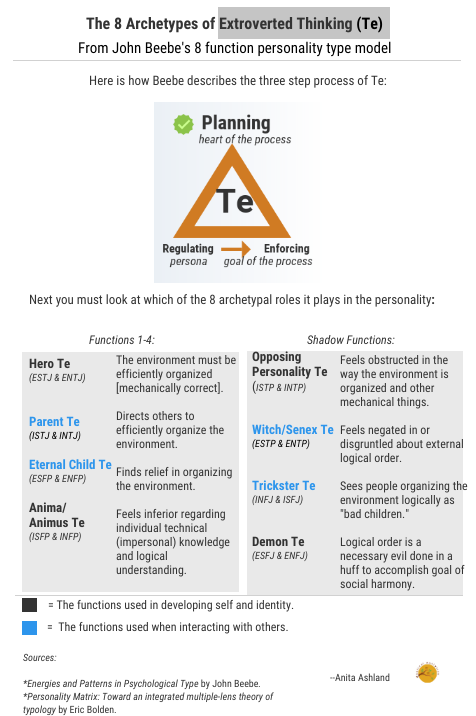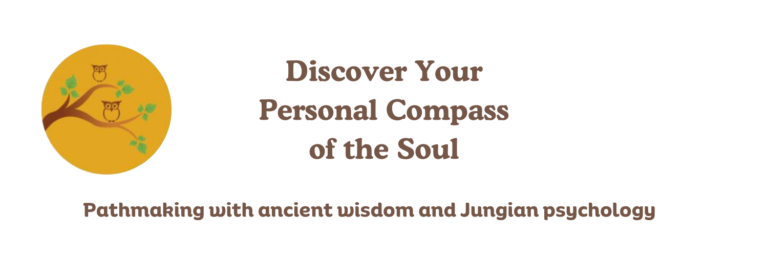Thinking is a rational, judging function and on the opposite pole of feeling. It organizes experiences and ideas and tends to be intellectual, analytical and impersonal.
The thinking function has no necessary connection with intelligence or the quality of thought, it is simply a process.
Daryl Sharp, Personality Types: Jung’s Model of Typology, p. 44
Thinking is taking place when one formulates a scientific
concept, reflects on the daily news or adds up a restaurant bill. It is extraverted or introverted according to whether it is oriented to the object or the subject.
Now let’s take a look at Extraverted Thinking (Te).
Extraverted Thinking is mechanistic and is cause-and-effect driven. It creates a world of structured and logical processes and behavior. It can be influenced by societal norms and external experiences.
According to Jungian analyst John Beebe, Te is “interested in definitions that would hold true for everyone, according to ideas everyone might agree with.” Whereas introverted thinking has to “reflect on whether a particular construction really accorded with the conviction of inner truth, regardless of what the received opinion might be.”
At their best, extraverted thinkers are statesmen, lawyers,
practical scientists, respected academics, successful entrepreneurs. They are excellent at establishing order, whether on paper, in their everyday lives, or at a business meeting. With a good sense of facts, they bring clarity into emotional situations. They are assets on any committee; they know Robert’s Rules of Order and when to apply them.Daryl Sharp, Personality Types: Jung’s Model of Typology, p. 45
At worst, this type is a religious zealot, a political opportunist, a con man (or woman), a strict pedagogue who brooks
no dissent.
Below is the infographic I made that describes all 8 archetypal roles of Te. All personality types have Ti and it behaves differently depending on where it is located. Half of the 16 personalities have it in the top four functions where it is more conscious. The other half have it in shadow.

This concludes the eight part series. Here are my other articles in this series:
The 8 archetypes of Introverted Thinking (Ti)
The 8 archetypes of Introverted Feeling (Fi)
The 8 archetypes of Extroverted Sensation (Se)
The 8 archetypes of Introverted Sensation (Si)
The 8 archetypes of Extroverted Intuition (Ne)
The 8 archetypes of Introverted Intuition (Ni)
The 8 archetypes of Extroverted Feeling (Fe)
Now that I’ve covered the functions, next on my agenda is to write about each of the archetypes (Senex, Trickster, etc.). Stay tuned!
